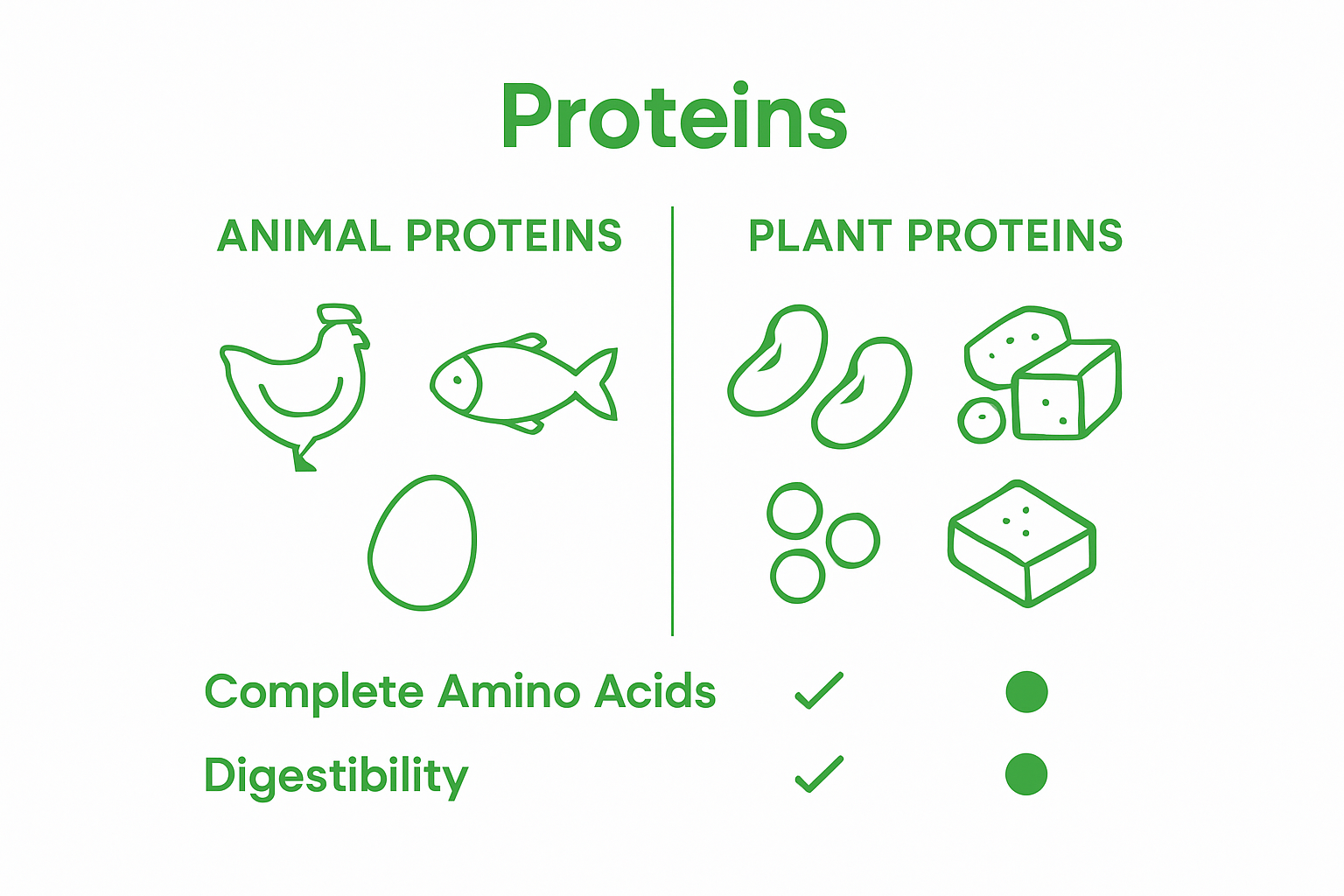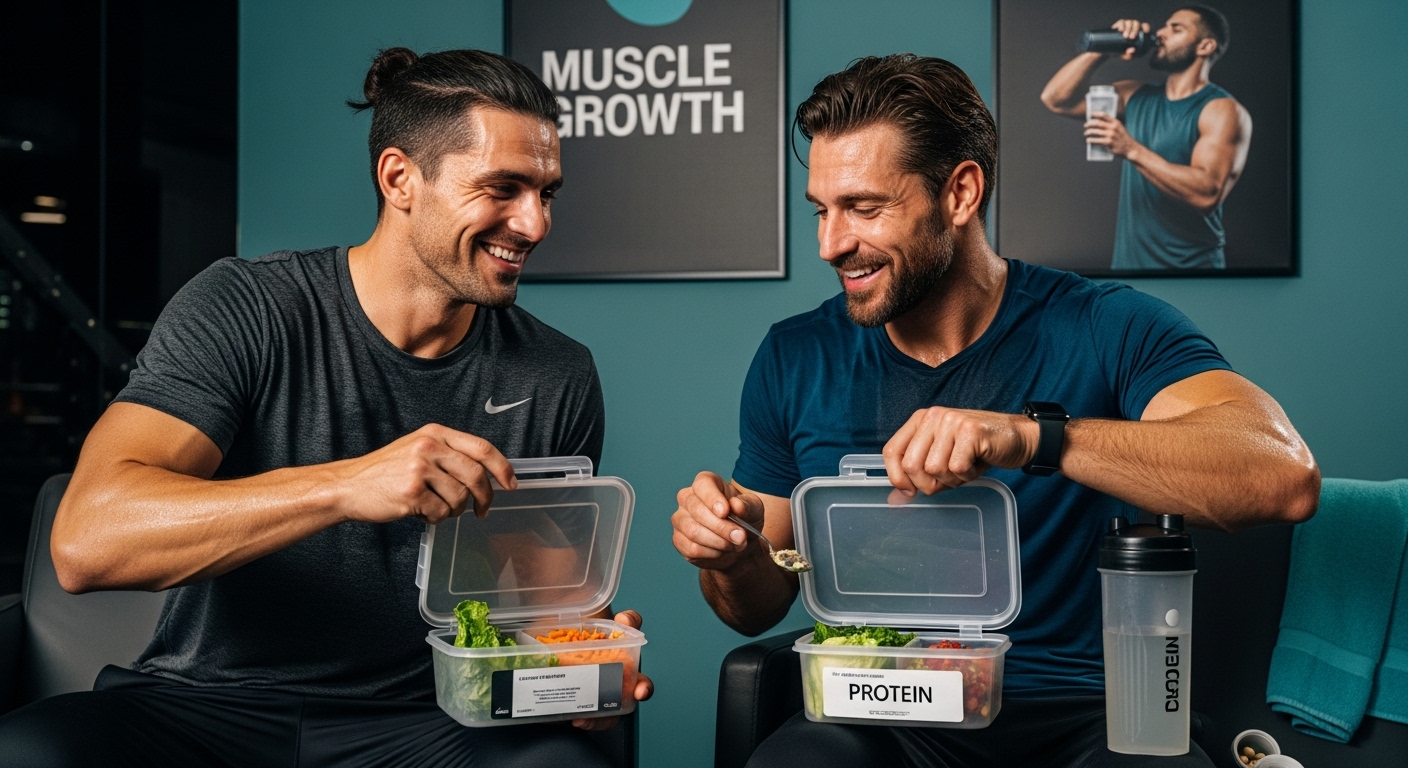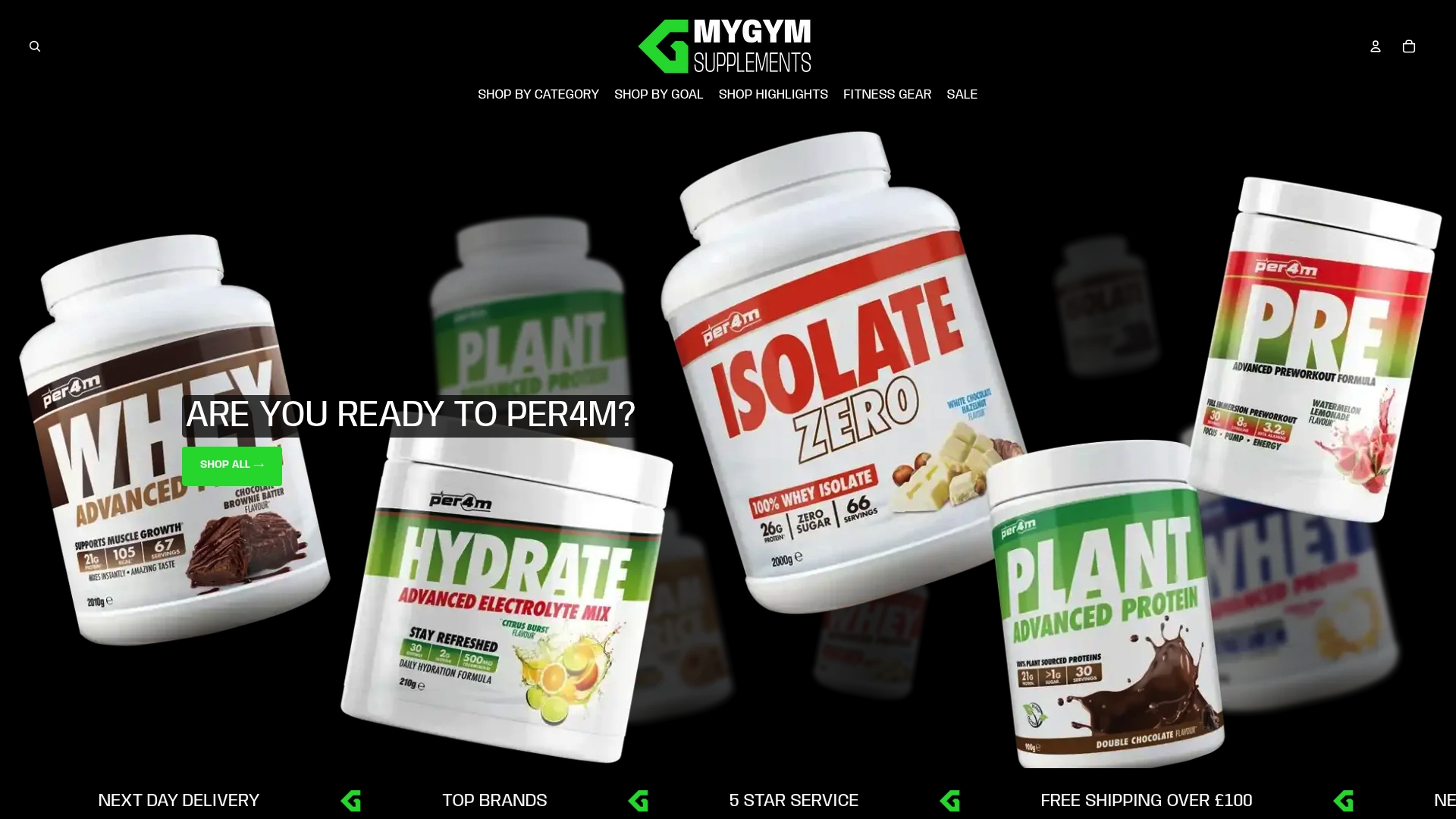A high protein diet is gaining attention among athletes and health-conscious people everywhere. Some experts suggest that protein intake for those in intense training can reach up to 2.2 grams per kilogram of body weight—almost triple the typical recommendation. Oddly, most assume more protein only means bigger muscles and quicker results. Strangely enough, the real difference comes not just in muscle, but in how this diet can transform metabolism, satiety, and even the way your entire body repairs itself at a cellular level.
Table of Contents
- Defining High Protein Diet: Key Components
- Why A High Protein Diet Matters For Fitness
- How Does Protein Influence Body Functions?
- The Role Of Protein Sources In Nutrition
- Potential Benefits And Considerations Of High Protein Diet
Quick Summary
| Takeaway | Explanation |
|---|---|
| Prioritise high protein intake. | Consume protein sources above standard daily allowances for better muscle development. |
| Include diverse protein sources. | Lean meats, fish, dairy, legumes, and plant-based proteins ensure comprehensive nutrition. |
| Balance macronutrients in meals. | Pair proteins with carbohydrates and healthy fats for optimal health. |
| Consult healthcare professionals first. | Personalised nutrition plans are essential for safe and effective implementation. |
| Monitor individual responses to protein. | Assess your body’s reactions to dietary changes to avoid potential risks. |
Defining High Protein Diet: Key Components
A high protein diet is a nutritional approach that prioritises protein consumption as a primary macronutrient, strategically designed to support muscle development, metabolic function, and overall physiological performance. Unlike traditional dietary models, this approach emphasises consuming protein at significantly higher quantities relative to carbohydrates and fats.
Protein Intake Fundamentals
At its core, a high protein diet involves consuming protein sources that exceed standard recommended daily allowances. According to the West London NHS Trust’s Eatwell Guide, protein requirements typically range from 0.75 to 1.2 grams per kilogram of body weight, depending on individual activity levels and fitness goals. For individuals engaged in intense physical training or muscle building, protein intake might increase to 1.6 to 2.2 grams per kilogram.
The table below summarises the range of recommended protein intake for various levels of activity and fitness, as discussed in the article.
| Activity Level | Recommended Protein Intake (g/kg body weight) | Description |
|---|---|---|
| General Population | 0.75 – 1.2 | Typical needs for basic health |
| Moderate Physical Activity | 1.0 – 1.5 | Enhanced requirements for active lifestyles |
| Intense Training/Athletic Goals | 1.6 – 2.2 | Supports muscle growth and accelerated recovery |
| Muscle Building/Fitness Focus | Up to 2.2 | Protocols for experienced athletes |
Key protein sources in this dietary approach include:
- Lean meats (chicken, turkey, beef)
- Fish and seafood
- Eggs
- Dairy products
- Legumes and beans
- Plant-based proteins
Macronutrient Balance and Considerations
While protein takes centre stage in this dietary strategy, maintaining a balanced macronutrient profile remains crucial. Protein should complement, not replace, other essential nutrients. Professional nutritionists recommend structuring meals to include lean proteins alongside complex carbohydrates and healthy fats.
Moreover, protein quality matters as much as quantity. Complete proteins containing all essential amino acids are preferred, ensuring comprehensive nutritional support for muscle repair, metabolic processes, and overall physiological function.
Individuals considering a high protein diet should consult healthcare professionals to develop a personalised nutrition plan that aligns with their specific health objectives, ensuring safe and effective implementation.
Why a High Protein Diet Matters for Fitness
A high protein diet transcends basic nutrition, serving as a strategic approach for fitness enthusiasts seeking enhanced physical performance, muscle development, and metabolic optimization. Understanding its significance requires examining the intricate relationship between protein intake and physiological adaptation.
Muscle Growth and Recovery Mechanisms
Protein plays a critical role in muscle protein synthesis, the biological process responsible for muscle repair and growth.
Muscle protein synthesis enables athletes and fitness practitioners to rebuild and strengthen muscle tissue following intense physical training. Research from Northumbria University indicates that consuming higher protein quantities can significantly reduce muscle damage markers and accelerate recovery processes.
Key benefits of protein for fitness include:
- Enhanced muscle repair
- Reduced exercise-induced muscle damage
- Improved muscle protein synthesis rates
- Faster recovery between training sessions
- Supporting lean muscle mass development
Performance and Metabolic Advantages
Beyond muscle development, a high protein diet influences metabolic function and exercise performance. Protein consumption stimulates metabolism, increases satiety, and provides sustained energy release. By maintaining stable blood sugar levels and reducing unnecessary food cravings, athletes can sustain consistent energy during training and competition.
Moreover, protein supports hormonal balance and contributes to overall body composition management. Protein requires more energy to metabolize compared to carbohydrates, meaning individuals following a high protein diet may experience enhanced metabolic rates and potentially improved body fat regulation.
While high protein diets offer numerous advantages, individual nutritional needs vary. Consulting healthcare professionals and nutrition experts ensures a tailored approach that aligns with specific fitness goals and physiological requirements.
How Does Protein Influence Body Functions?
Proteins are fundamental biomolecules that orchestrate numerous critical physiological processes, functioning as intricate molecular machines that drive cellular activity and systemic health. Far beyond mere nutritional components, proteins represent the primary workforce responsible for maintaining complex biological mechanisms.
Cellular Communication and Structural Support
At the molecular level, proteins serve as essential communication agents within biological systems. Vegan protein sources demonstrate remarkable versatility in supporting these intricate cellular interactions. According to University of Nottingham research, proteins play pivotal roles in multiple physiological domains, including:
- Enzyme production and biochemical reactions
- Immune system regulation
- Hormone signal transmission
- Cellular structure maintenance
- Genetic information processing
Metabolic Regulation and Functional Dynamics
Proteins act as sophisticated metabolic regulators, controlling numerous biochemical pathways that sustain life. Proteins function as molecular switches, enabling or inhibiting critical metabolic processes through precise structural configurations. Specific protein types like enzymes catalyze chemical reactions, while transport proteins facilitate nutrient movement across cellular membranes.
Hormonal proteins such as insulin demonstrate protein complexity, regulating blood glucose levels and metabolic energy distribution. Hemoglobin proteins exemplify another crucial function by transporting oxygen throughout the bloodstream, highlighting proteins’ multifaceted roles in maintaining physiological equilibrium.
Understanding protein functionality reveals their status as indispensable biological architects, continuously constructing, maintaining, and regulating complex living systems through intricate molecular interactions.
The Role of Protein Sources in Nutrition
Protein sources form the foundation of nutritional strategies, offering diverse mechanisms for meeting dietary requirements and supporting physiological functions. Understanding the nuanced differences between protein types enables individuals to make informed dietary choices that optimise health and performance.
Animal vs. Plant-Based Protein Profiles
Protein sources can be categorised into animal and plant-based varieties, each presenting unique nutritional characteristics. Vegan protein sources offer distinct advantages for individuals seeking alternative nutrition strategies. According to the British Nutrition Foundation, comprehensive nutrition requires a diverse protein intake.
Key characteristics of protein sources include:

- Complete vs. incomplete amino acid profiles
- Digestibility rates
- Nutrient density
- Bioavailability of essential amino acids
- Potential additional nutritional benefits
Protein Quality and Nutritional Considerations
Protein quality determines its effectiveness in supporting bodily functions. Animal-based proteins typically provide complete amino acid profiles with higher biological value, meaning they contain all essential amino acids in optimal proportions. Conversely, plant-based proteins often require strategic combination to achieve comprehensive nutritional coverage.
Nutritional experts recommend diversifying protein sources to ensure a balanced intake of essential nutrients. Lean meats, fish, eggs, dairy, legumes, and plant-based alternatives each contribute unique nutritional profiles that support different physiological requirements.
Considerations such as individual dietary preferences, nutritional goals, and potential allergies or intolerances play crucial roles in selecting appropriate protein sources.
The following table compares key characteristics of animal-based and plant-based protein sources to clarify their roles in a high protein diet.
| Protein Source Type | Amino Acid Profile | Digestibility | Nutrient Density | Additional Considerations |
|---|---|---|---|---|
| Animal-Based | Complete (all essential) | High | Often includes iron, B12 | Higher saturated fat (some types) |
| Plant-Based | Often incomplete | Varies | Includes fibre, vitamins | Combine sources for completeness |
| Lean Meats | Complete | High | Iron, B vitamins | Lower fat when trimmed |
| Fish & Seafood | Complete | High | Omega-3 fatty acids | Lean options available |
| Legumes & Beans | Incomplete (some) | Moderate | High in fibre | Pair with grains for completeness |
| Dairy Products | Complete | High | Calcium, vitamin D | Potential lactose intolerance |
| Plant-Based Alternatives | Incomplete/complete (varies) | Varies | Varies (can be fortified) | Often lower in calories |

Potential Benefits and Considerations of High Protein Diet
A high protein diet presents a complex nutritional strategy with multifaceted implications for human health, performance, and metabolic function. Navigating its potential advantages and potential drawbacks requires a nuanced understanding of individual physiological responses and comprehensive nutritional planning.
Physiological Performance and Body Composition
High protein diets demonstrate significant potential for transforming body composition, particularly for individuals engaged in physical training. Protein supplementation strategies can strategically support muscle development and metabolic efficiency. According to research published in the journal Nutrients, high protein intake offers several remarkable benefits:
- Enhanced muscle protein synthesis
- Improved appetite regulation
- Increased metabolic rate
- Preservation of lean muscle mass during weight loss
- Potential improvements in body composition
Health Considerations and Potential Risks
While high protein diets offer substantial benefits, careful implementation remains crucial. Potential risks include increased strain on kidney function, particularly for individuals with pre-existing health conditions. Nutritional experts recommend balanced protein intake that considers individual health status, activity levels, and overall dietary composition.
Critical factors to consider include maintaining adequate hydration, ensuring diverse nutrient intake, and monitoring individual physiological responses. Some individuals might experience digestive challenges or metabolic adaptations when significantly increasing protein consumption, necessitating gradual dietary transitions and professional nutritional guidance.
Ultimately, a high protein diet is not a universal solution but a personalised nutritional approach that requires thoughtful implementation, regular monitoring, and alignment with individual health objectives.
Boost Your High Protein Diet With Premium Supplements
Struggling to keep your protein intake high enough for muscle growth and recovery as discussed in this article? Many active individuals find it challenging to hit their daily protein targets or ensure a balanced intake of complete amino acids from diet alone. Whether you want to support muscle repair, regulate appetite or optimise metabolic performance, quality protein supplementation can make reaching your health milestones easier and more enjoyable.

Transform your nutrition plan today. Explore MyGymSupplements.shop for a curated selection of high protein options designed for effective muscle support and faster post-workout recovery. From advanced whey supplements to vegan protein sources, you will find the perfect fit for your goals. Start shopping now and experience the real benefits of a high protein diet backed by trusted products.
Frequently Asked Questions
What is a high protein diet?
A high protein diet is a nutritional strategy that prioritises protein intake as a primary macronutrient, significantly exceeding standard daily allowances to support muscle development, metabolic function, and overall health.
What are the benefits of a high protein diet for fitness?
A high protein diet enhances muscle growth and recovery, improves muscle protein synthesis, reduces exercise-induced muscle damage, and supports metabolic function and performance.
How much protein should I consume on a high protein diet?
Protein intake typically ranges from 0.75 to 1.2 grams per kilogram of body weight for general health. For those engaged in intense physical training, this may increase to 1.6 to 2.2 grams per kilogram, depending on individual goals.
Are animal or plant-based proteins better in a high protein diet?
Both animal and plant-based proteins can be effective. Animal proteins often provide complete amino acid profiles, while plant-based sources may require strategic combinations to ensure comprehensive nutritional coverage.
Recommended
- Understanding What are Protein Isolates and Their Benefits – MyGymSupplements
- Understanding What is Vegan Protein and Its Importance – MyGymSupplements
- Unleash Protein Power with Optimum Nutrition Shake – MyGymSupplements
- What is Peptide Protein? Understanding Its Role in Health – MyGymSupplements
- Best Protein Treatment for Natural Hair in 2025: Growth & Care | MyHair



0 comments